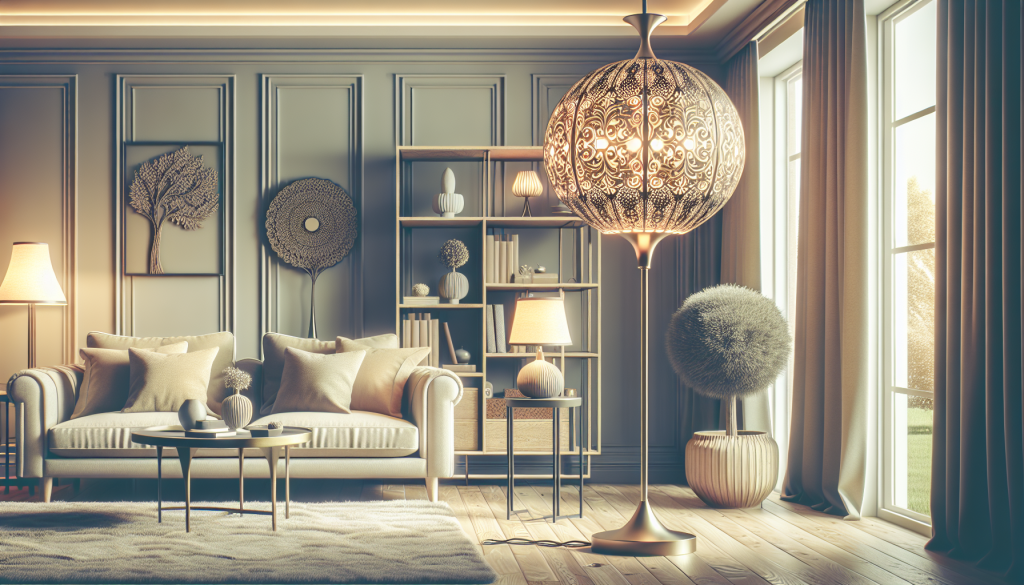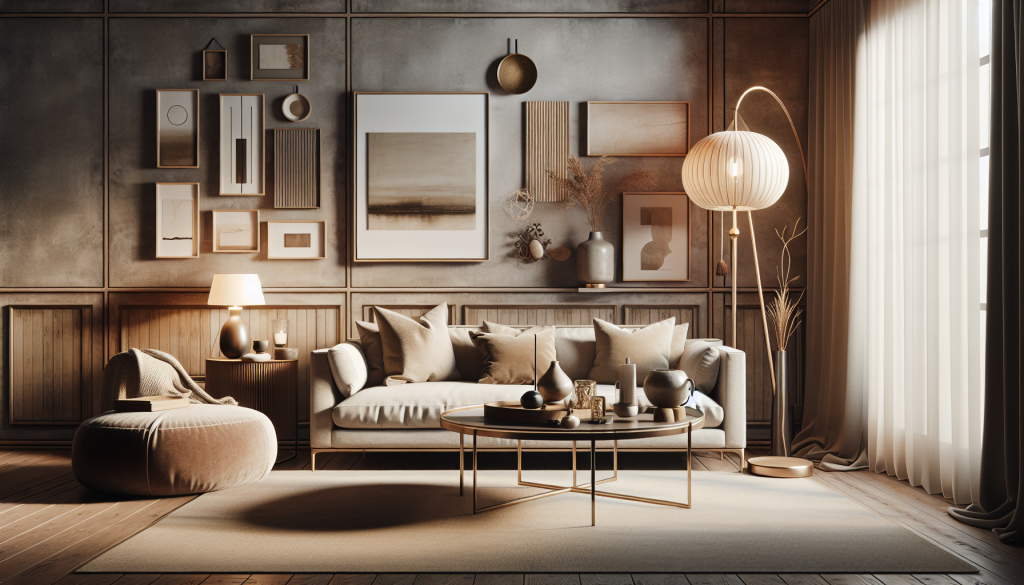Beginner’s Guide To Setting Up Floor Lamps In Your Living Room
Have you recently purchased a beautiful floor lamp for your living room, but have no idea how to set it up? Look no further! This beginner’s guide will walk you through step-by-step instructions on how to effortlessly install and arrange floor lamps in your living room. Whether you want to create a cozy reading nook or illuminate a dark corner, this guide has got you covered. So, grab your tools and get ready to transform your living room into a well-lit oasis of relaxation and style!
Choosing the Right Floor Lamp
choosing the right floor lamp for your living room is essential to create the desired ambiance and functionality. To begin, consider the size of your room. A larger room will require a taller and more substantial floor lamp, while a smaller room may benefit from a petite and compact option.
Next, think about the style you want to achieve. Floor lamps come in various designs, from sleek and modern to classic and traditional. Select a style that complements the overall aesthetic of your living room.
Furthermore, determining the purpose of the lamp is crucial. Are you looking for a task light to read or work by? Or perhaps you want a floor lamp that provides ambient lighting to create a cozy atmosphere. Understanding the purpose will help you choose the right type of floor lamp to meet your specific needs.
Determining the Best Placement
Finding the best placement for your floor lamp is vital to optimize its functionality and enhance the overall look of your living room. Start by evaluating the room layout. Consider the different seating areas and the placement of other furniture pieces. This will help you determine where the floor lamp will have the most impact and importance.
Take into account the natural light sources in your living room. If you have large windows that provide ample natural light during the day, you may want to position the floor lamp in a spot where it will be more useful during evenings or darker hours. Finding the right balance between natural and artificial lighting is key to creating a cozy and inviting ambiance.
Additionally, ensure proper distance from furniture when placing the floor lamp. You wouldn’t want the lamp to be too close or too far from seating areas. Take measurements and visualize the lamp in relation to other furniture to find the optimal placement.

Preparation and Safety Measures
Before setting up your floor lamp, it’s important to take certain preparation and safety measures. First, check the electrical outlets in your living room. Make sure there are enough available outlets to accommodate the lamp and any additional electronics you may want to connect.
Next, measure the available space where you plan to position the floor lamp. This will help you choose a lamp that fits appropriately without overwhelming the room or obstructing pathways.
Ensuring stability and balance is crucial for the safety of your floor lamp. Make sure the lamp has a sturdy base and won’t easily topple over. If needed, place a non-slip pad or add weight to the base to provide additional stability.
Understanding the Different Types of Floor Lamps
There are several types of floor lamps, each with its own unique features and benefits. Traditional floor lamps are characterized by their timeless designs and often come with fabric lampshades. These lamps are perfect for creating a classic and elegant look in your living room.
arc floor lamps have a distinctive curved design that allows the light to extend over seating areas or tables. These lamps are great for providing focused lighting and adding a touch of modern flair to your living room.
Task floor lamps are designed specifically for functional purposes such as reading or working. They often come with adjustable arms or heads to direct light precisely where it is needed. Task floor lamps are a practical addition to your living room, especially if you have a designated reading nook or workspace.
Torchiere floor lamps provide upward lighting, which creates a soft and diffused glow. These lamps are ideal for adding ambient lighting or illuminating dark corners in your living room. They can also serve as a decorative element with their elegant designs.

Assembly of Floor Lamps
Assembling a floor lamp may seem daunting, but with the right approach, it can be a straightforward task. Start by unpacking and organizing the parts of the lamp. Lay everything out in an organized manner to ensure you have all the necessary components.
Next, attach the base of the floor lamp according to the manufacturer’s instructions. The base is typically the heaviest part and provides stability to the lamp.
After attaching the base, connect the pole and neck of the floor lamp. Follow the provided guidelines to securely fasten the parts together.
Finally, install the lampshade onto the lamp. This can usually be done by sliding it onto the neck or attaching it with screws or clips. Make sure the lampshade is aligned properly and sits securely on the lamp.
Wiring and Bulb Installation
Before wiring and installing the light bulb, it’s essential to check the lamp’s wiring for any damages or defects. Ensure that the wires are intact and properly insulated. If you notice any issues, consult a professional before proceeding.
To properly connect the wires, refer to the lamp’s instruction manual or the manufacturer’s guidelines. Follow the instructions carefully to avoid any electrical hazards. It’s important to connect the appropriate wires together, typically matching colors.
Choosing the right light bulb for your floor lamp is crucial for achieving the desired lighting effect. Consider the brightness, color temperature, and energy efficiency of the bulb. LED bulbs are a popular choice due to their longevity and energy-saving features. Install the bulb according to the lamp’s specifications, making sure it is securely in place.
Adjusting and Positioning the Lampshade
Once the floor lamp is assembled and wired, it’s time to adjust and position the lampshade for optimal lighting. Ensure that the lampshade is aligned properly and sits level on the lamp. Adjust its position if necessary to achieve a balanced and appealing look.
You can also adjust the angle of the lampshade to direct the light where needed. Tilt it slightly up or down to control the lighting effect and create the desired ambiance in your living room.
Finally, position the lampshade in a way that provides optimal lighting for the space. Experiment with different angles and heights to find the perfect balance between functionality and aesthetics.
Testing and Fine-Tuning
After successfully setting up the floor lamp, it’s time to test and fine-tune its functionality. Plug in the floor lamp and ensure that it is receiving power. Check if the on/off switch is working properly.
Turn on the lamp and observe the brightness of the light. If it’s too bright or too dim, consider adjusting the light bulb or using dimmer switches to achieve the desired lighting intensity.
Take a moment to evaluate the overall positioning of the floor lamp. If you find that it doesn’t provide adequate lighting or doesn’t blend well with the surrounding decor, don’t hesitate to experiment with different placements or even reposition furniture if necessary.
Additional Tips and Tricks
To enhance the functionality of your floor lamps, consider using dimmer switches. Dimmers allow you to adjust the brightness of the lamp according to your needs and mood.
Incorporating multiple floor lamps in your living room can create a layered lighting effect. Combine different types of floor lamps to provide task lighting, ambient lighting, and accent lighting in various areas of the room.
Floor lamps can serve different purposes beyond traditional lighting. They can be utilized as decorative elements or even as a makeshift room divider in open-concept living spaces.
Maintenance and Care
Proper maintenance and care will ensure the longevity and optimal performance of your floor lamp. Regularly dust and clean the lamp to remove any debris or buildup that can affect its appearance and functionality.
If you encounter any faulty parts or wiring issues, it’s important to address them promptly. Replace damaged or worn-out parts to avoid any safety hazards and maintain the integrity of the lamp.
When the floor lamp is not in use, consider storing it in a safe location to protect it from dust or potential damage. Covering the lamp with a cloth or storing it in a designated space will help prolong its lifespan.
By following these guidelines, you can confidently set up and enjoy the benefits of a floor lamp in your living room. With the right choice of lamp, proper placement, and diligent maintenance, you can create a well-lit and inviting space for relaxation, work, or socializing.




